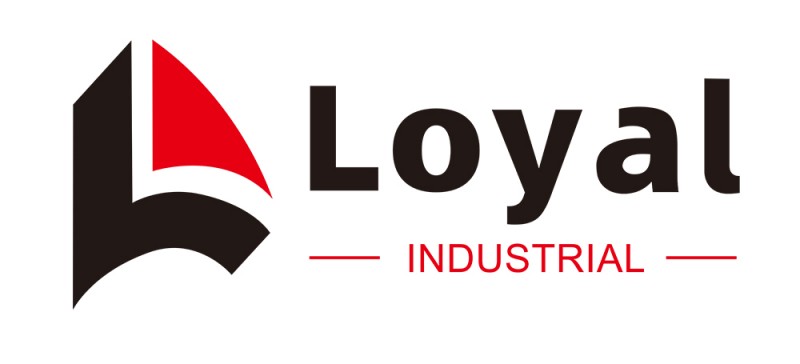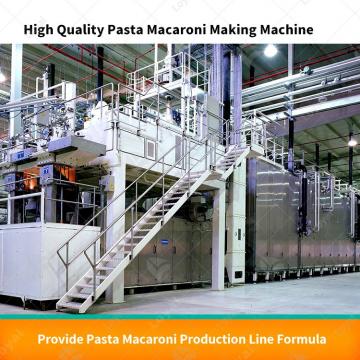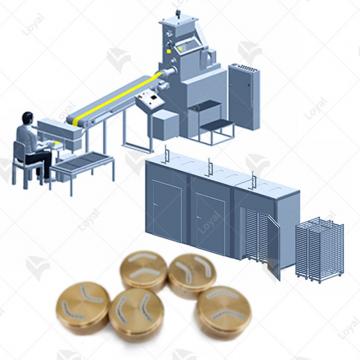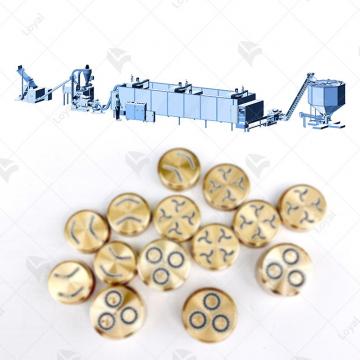Fully Automatic Spaghetti Production: Advancing Efficiency and Energy Savings
Description
Introduction
Shandong Loyal Industrial Co., Ltd. has incorporated advanced technologies from BUHLER and BID in the production of its macaroni.Unveiling the significance of fully automatic spaghetti production marks a revolutionary leap in the pasta manufacturing industry. This article delves into the advancements in efficiency and energy savings brought about by streamlined processes. As we navigate the evolution of spaghetti production, from traditional methods to the current era of automation, the transformative impact on efficiency and sustainability becomes evident.

Evolution of Spaghetti Production
The historical context of traditional pasta manufacturing serves as the backdrop for the evolution of spaghetti production. From the manual labor-intensive processes of the past, the industry has transitioned to automated systems, marking a paradigm shift in production efficiency. Technological innovations have played a pivotal role in shaping this evolution, with advancements ranging from mechanization to sophisticated fully automatic processes. As we delve into the roots of spaghetti production, the journey reveals a relentless pursuit of efficiency and precision.
Fully Automatic Systems: A Game-Changer
The definition and scope of fully automatic spaghetti production systems herald a new era in the industry. These systems are not merely machinery; they represent a transformative force. The benefits of automation extend beyond efficiency; they encompass the minimization of energy consumption. A comparison between traditional and fully automatic approaches showcases the quantum leap in precision, consistency, and overall operational excellence achieved through automation. The game-changing nature of fully automatic systems becomes apparent in their ability to redefine how spaghetti is produced, setting unprecedented standards for the industry.
Efficiency Unleashed: Optimizing Spaghetti Production
Fully automatic systems optimize spaghetti production by unleashing a new level of efficiency. Streamlined workflows ensure increased production output, meeting the growing demands of the market. The precision and consistency achieved through automation elevate the quality of the end product, satisfying both manufacturers and consumers alike. Case studies become testament to the success of fully automatic systems, illustrating how efficiency is not just a goal but a tangible outcome in the world of optimized spaghetti production.
Energy Savings in Automated Spaghetti Production
In the modern landscape of manufacturing, the importance of energy efficiency cannot be overstated. The adoption of fully automatic systems in spaghetti production aligns with this ethos, emphasizing the need for sustainable practices. Technologies employed for energy conservation play a crucial role in minimizing the environmental footprint of pasta manufacturing. As we explore the realm of energy savings, it becomes evident that fully automatic spaghetti production is not only about optimizing processes but also about embracing a responsible approach towards resource consumption and environmental impact.

Challenges and Solutions
The adoption of fully automatic spaghetti production is not without its challenges, and understanding and overcoming these hurdles are paramount. Potential challenges in this transition include technological integration complexities, concerns about job displacement, and the need for sustainable and responsible manufacturing practices.
Innovative solutions are essential to ensure the smooth integration of fully automatic systems. Collaborative efforts between industry experts, technologists, and policymakers can pave the way for addressing these challenges. Technological advancements that simplify integration, coupled with training programs for the workforce to adapt to the evolving landscape, form a crucial part of the solution. Moreover, a holistic approach that prioritizes sustainability, ethical considerations, and social responsibility is vital for overcoming challenges associated with the widespread adoption of fully automatic spaghetti production.
As industries navigate these challenges, it becomes clear that the transformative benefits of automation must be coupled with a thoughtful and inclusive approach. By addressing these challenges head-on, the industry can unlock the full potential of fully automatic spaghetti production while fostering a sustainable and responsible future.

Common Questions about Spaghetti Production
Q1: What makes fully automatic spaghetti production significant in the industry?
Fully automatic spaghetti production is a game-changer in the industry, optimizing efficiency and energy consumption. The seamless integration of advanced technologies streamlines workflows, ensuring precision and consistency in pasta quality.
Q2: How has technology shaped the evolution of spaghetti production?
The evolution of spaghetti production has been driven by technological innovations. From traditional manufacturing to fully automatic systems, advancements have optimized processes, increasing production efficiency and product quality.
Q3: What benefits does automation bring to spaghetti production?
Automation enhances efficiency by optimizing workflows and increasing production output. The consistency achieved in pasta quality through automation is unparalleled, setting a new standard in the industry.
Q4: Can fully automatic spaghetti production contribute to energy savings?
Absolutely. Fully automatic systems are designed to minimize energy consumption, employing advanced technologies and sustainable practices. This not only improves operational efficiency but also reduces the environmental impact of pasta manufacturing.
Q5: What are the challenges in adopting fully automatic spaghetti production, and how can they be overcome?
Challenges in adoption include technological integration and the need for sustainable practices. Innovative solutions, coupled with a focus on responsible manufacturing, can overcome these hurdles, ensuring a smooth transition.
Conclusion
In recapitulating the benefits of fully automatic spaghetti production, the article highlights the monumental strides made in efficiency and sustainability within the pasta manufacturing sector. The ongoing evolution towards more efficient and sustainable processes signifies a promising future. As we close this exploration, the transformative impact of automation remains a driving force, steering the industry towards a new era of optimized spaghetti production.





